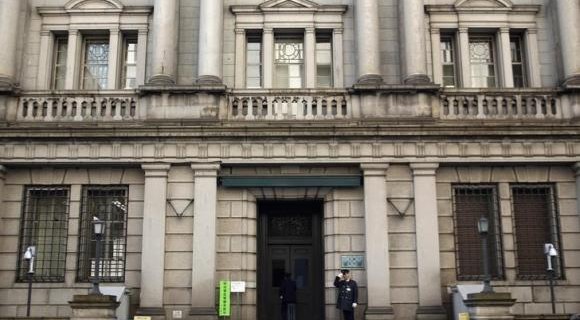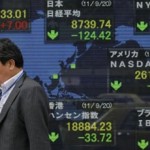Asian central banks back in action this week

The week ahead starts with Asian markets digesting the crucial U.S. nonfarm payrolls report, which continued to fuel the ongoing debate over when the Federal Reserve will launch its first interest rate hike.
After digesting the U.S. jobs data, markets are likely to turn their attention to a string of central bank action as well as key inflation data from China, which could shed light on the state of the world’s second-largest economy.
Central banks
The Reserve Bank of Australia (RBA) meets on Tuesday, while the Bank of Japan (BOJ) concludes a two-day meeting on Wednesday and the Bank of Korea (BOK) meets on Thursday.
While the RBA is widely expected to pull the rate cut trigger, Japan’s central bank is seen leaving its monetary policy unchanged, while the BOK will likely keep rates on hold following last’s months surprise rate cut.
Societe Generale expects the RBA to unveil a 25-basis-point rate cut, bringing the cash rate to a new all-time low of 2.0 percent: “The key consideration is that growth will remain sub-trend for a few quarters and key commodity prices will continue to slide, which makes a weaker exchange rate highly desirable from a policy perspective. The prospect of a U.S. rate hike as early as June may also close the window of opportunity to ease policy elsewhere quite soon,” analysts said.
While South Korea’s central bankers may lower its growth and inflation forecasts at this week’s policy meeting, they will refrain from further easing until the third quarter, HSBC analysts wrote in a note.
“The BOK lowered its policy rate to a record low of 1.75 percent in March. That will give BOK officials more time to monitor economic developments before easing further,” the note said.
For Japan, recent data reaffirmed that the world’s third-biggest economy is crawling out of a tax-induced recession. Gross domestic product (GDP) grew an annualized 2.2 percent in the final quarter of 2014, but missed expectations in a Reuters poll for a 3.7 percent gain.
That will give the BOJ enough room to maintain its expansionary monetary stance, according to Moody’s Analytics, but further stimulus measures will be needed to achieve its 2 percent inflation target next March.
China
Due on Friday, China’s consumer price index (CPI) is likely to rise 1 percent in March from a year earlier, Moody’s Analytics said, below the 1.4 percent increase in the preceding month but higher than the five-year low of 0.8 percent in January.
Wholesale prices, or the producer price index (PPI), are expected to fall 4.8 percent in March due to the ongoing rout in commodity prices. The estimated figure is unchanged from February and a notch higher than the 4.3 percent drop in January.
A plunge in oil prices, weak consumption and a slowing property sector have driven prices lower in recent months, even as China’s economy braces for slower growth this year. The persisting issue of disinflation indicates weak domestic demand and if “March readings on consumer and producer price inflation undershoot, the People’s Bank of China (PBoC) is all but sure to enact further easing measures,” analysts wrote in a note issued last week.
Rest of Asia
In other parts of Asia, Singapore will provide advance estimates of gross domestic product (GDP) for the first quarter, while India’s March trade deficit could see a rise when the Ministry of Commerce and Industry releases data this week.
Analysts expect India’s deficit to widen to $7.2 billion, after February’s data shrank to the lowest level in 17 months on the back of declining oil prices.
Source: CNBC – Asian central banks back in action this week




























